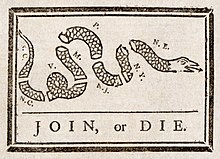Greeks await name of new coalition government PM
Hey Hey, lQQky what we got going on over here in Greece

On a complete side track:
Social Structure in Medieval Japan:
First: The Emperor. The Emperor technically was the topmost position in Japanese society, but usually the Emperor was not actually in control of the country; rather it was the person who was Shogun who basically ran everything. The Emperor was kept under constant surveillance with their movements kept quite limited.
Second: The Shogun technically was the second most powerful person in the country but actually was the one to hold the real power.
Third: Daimyo: There were 250 han, or clan domains, into which the country was divided. The fudai composed the "inner" group which had proclaimed their allegiance to the Tokugawa shogunate before the battle of Sekigahara, and the tozama or "outer" group which proclaimed their allegiance after that battle.
Fourth: Samurai. The samurai were in the employ of the daimyo. They were fairly limited to the amount of money they could have, helping to keep them under the daimyo's thumbs. They were also expected to serve their lords faithfully and even sacrifice their lives if necessary.
The samurai were also allowed to kill anyone they considered inferior to them. Thus, if a peasant happened to hurls verbal insults at a samurai, the samurai could turn around and behead the peasant without any fear of reprisal from the authorities.
Fifth: Farmers. Farmers made up about 80% of the population of the country but were forbidden to have weapons. They were totally dependent upon their harvest; a year of bad harvest could result in starvation and the killing of female infants, called mabiki or "weeding out the rice seedlings."
Sixth: Craftsmen. People who lived in the towns that developed did not grow their own food, thus placing them below farmers in the social status. Swordsmiths were considered at the top of this group of people.
Seventh: Merchants. Considered by most a parasite, as they earned a living from the labor of others, they were almost at the bottom of the social order
they managed to control much of the financial power. (sound like anyone we know??? *Cough* Banksters *Cough* ..

)
Eight: Outcasts of Japanese society. Beggars were in this group.
As the samurai lost importance, and the merchants gained wealth and power, taboos against the different classes mingling were circumvented with increasing regularity. A new class title, chonin, came to describe upwardly-mobile merchants and artisans. During the time of the "Floating World," when angst-ridden Japanese samurai and merchants gathered to enjoy the company of courtesans or watch kabuki plays, class mixing became the rule rather than the exception. This was a time of ennui for Japanese society. Many people felt locked in to a meaningless existence, in which they just sought out the pleasures of earthly entertainment as they waited to pass on to the next world.
All things must come to an end.... I know a LOT of obese Americans who spend their time staring at their TVs. Hell, some can't even stand to be in their homes without the TV on. Waiting for the end and to pass on to the next world I suppose :shrug: I sure wish they'd get off their fat arses and move their moneys from Citi, BofA and Chase over to local credit union



